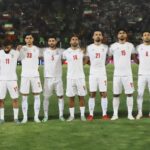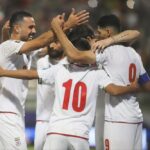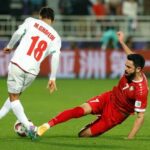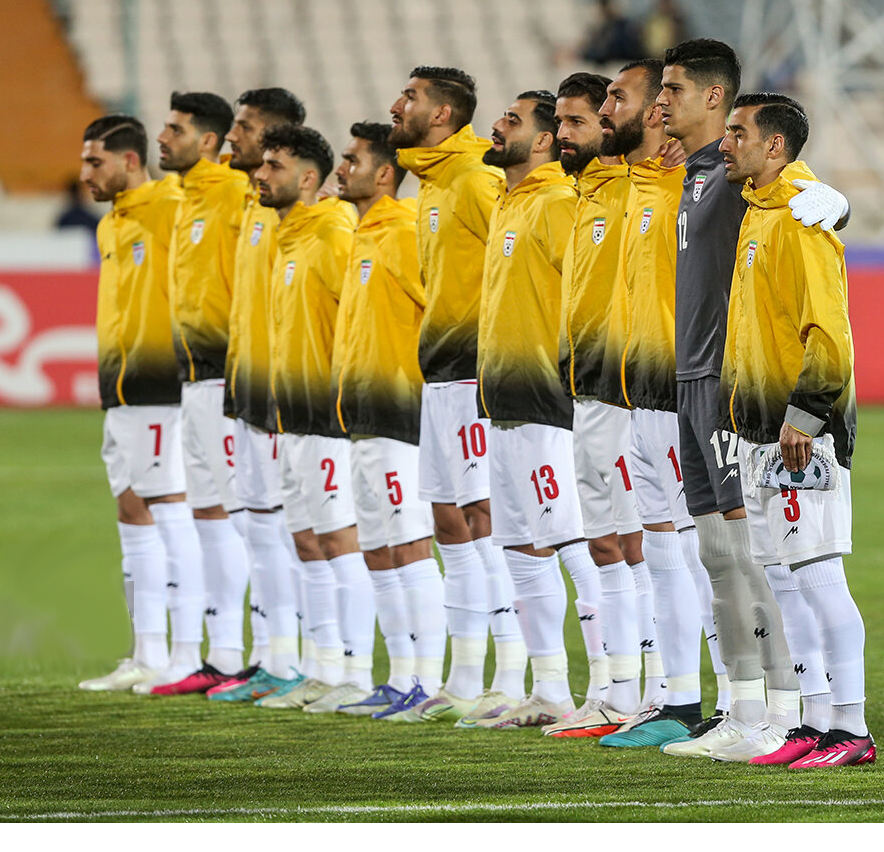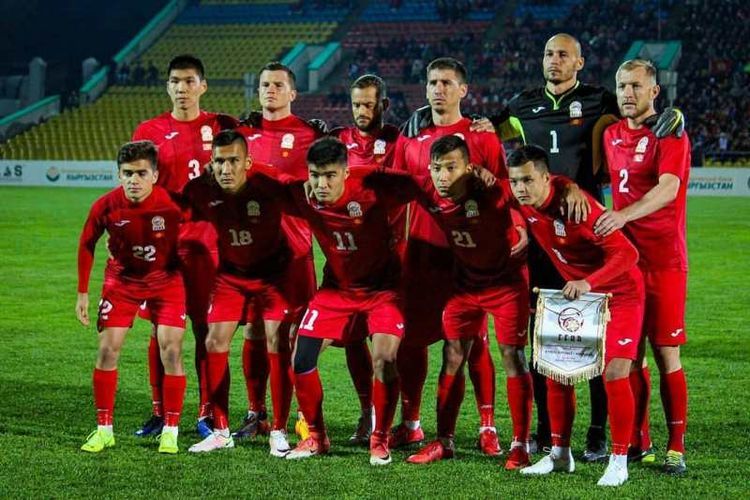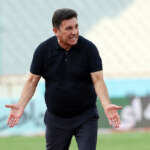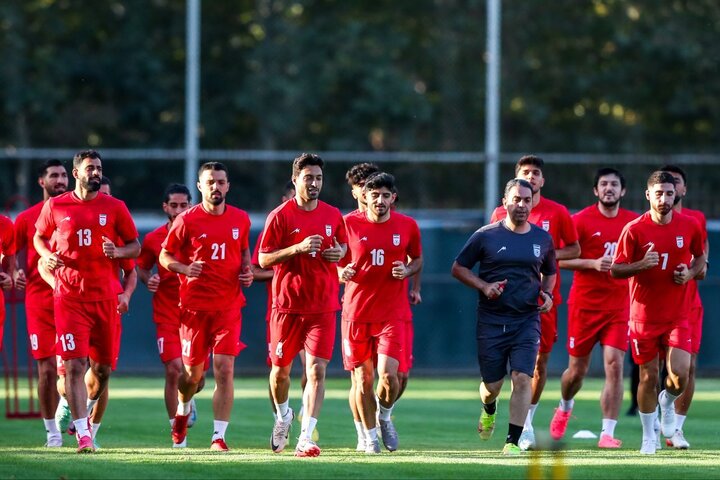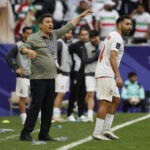Passing Woes and Twisted Logic
When players cannot pass properly to their teammates—a basic skill in football—what can you expect from them? These were the words of a veteran ex-Team Melli player commenting on the match. However, according to Ghalenoei’s logic, Iranian fans should be grateful to his players even turning up, because even Real Madrid, Australia, and South Korea have bad days too! Twisted logic at its best!
Kyrgyzstan’s Improved Performance
Kyrgyzstan, a third-tier team in Asia, was comprehensively defeated last time out against Team Melli. However, this time, we witnessed a respectable highly disciplined. The Kyrgyz team was more organized and defensively solid, even on the same atrocious turf that Iran was playing on. The good performance of the Kyrgyz team was aided by the Iranian players’ lackluster performance.
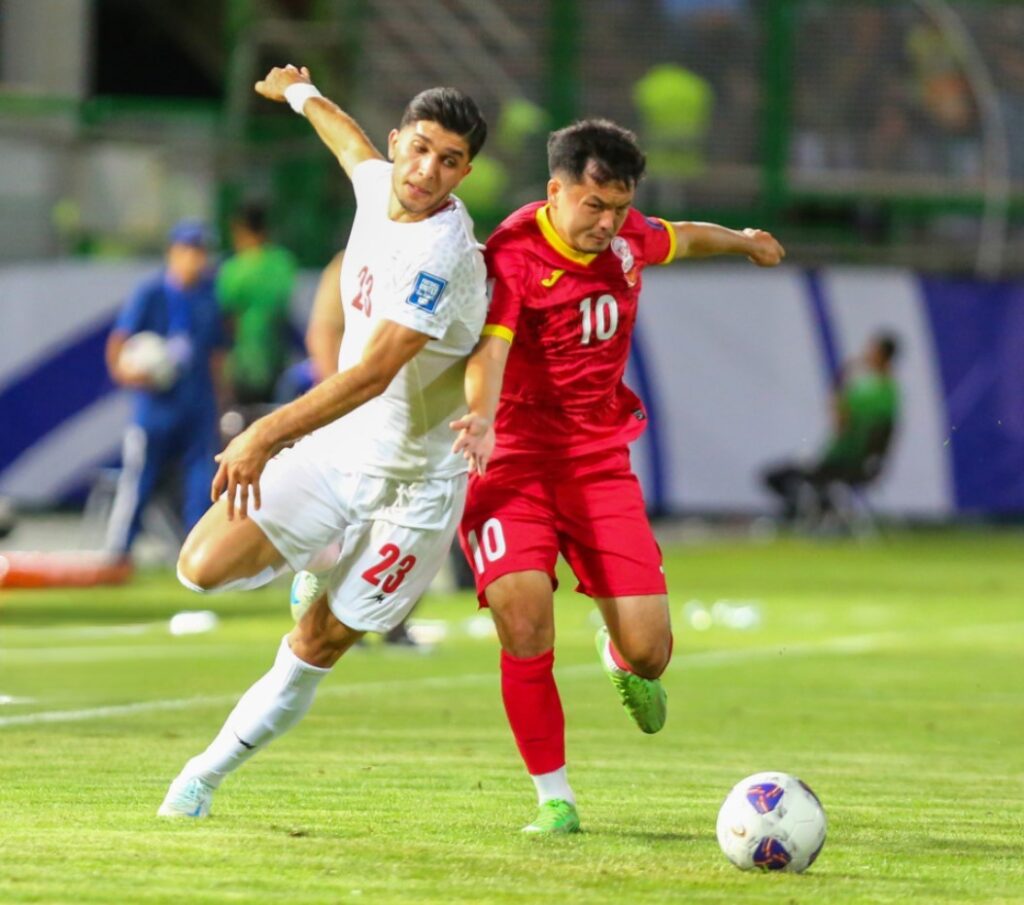
Goalkeeping Errors and Missed Opportunities
If it wasn’t for the unfortunate error by the Kyrgyzstan goalkeeper—his only mistake of the game, where he parried a long-range shot from Noorafkan—the match would have ended goalless. On the other end, a fingertip save from Beiranvand prevented a freak goal in the first half. The Team Melli keeper repeated his heroics in the second when he prevented Joel, the nifty African-Kyrgyz winger, from scoring at close range.
Iran’s Lack of Superiority
Let us remember that Iran scored due to a goalkeeping error and not because of the superiority of their players. The most noticeable weakness of Team Melli was the midfield. The old dependable player who dictated the rhythm and pace of the team is no more. Perhaps the turn-up by name, but NOT the performance.
Ghoddos and Ghaedi had a forgettable game, Gholizade tried but his final ball always missing target, even an empty net. Noorafakn was out of place and out of pace. The comp[position of the midfield was not ticking.
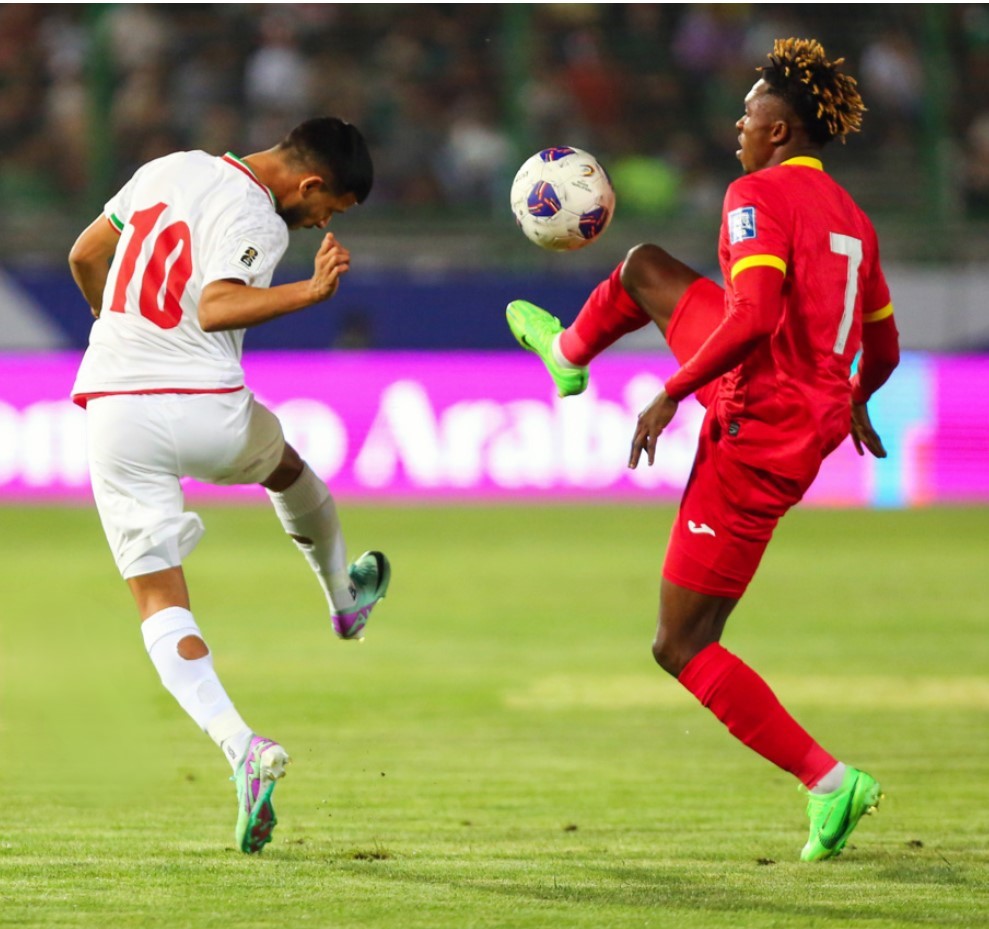
Pitch Conditions and Tactical Failures
The embarrassing shape and status of the grass field and the solid, compact defensive style of Kyrgyzstan caused Iran to run out of ideas. Ghalenoei failed to adjust the team tactics to counteract such a style. The quality was lacking in every aspect of the game plan for Team Melli—passing, penetration, crosses, covering spaces, and most definitely, dribbling were all poor. Ghalenoei must fundamentally rethink the defense line and midfield. If this continues, Team Melli will have very tough days ahead, especially when they meet UAE, who came out as winners against the AFC Asian Cup holder Qatar with a convincing 3-1 score.
Beiranvand’s Mixed Performance
Alireza Beiranvand was a mixture of heroism and stupidity. His fast reflexes saved Iran’s blushes when he stopped Kyrgyz winger Joel from scoring from close range. However, his stupidity was evident when he was caught lingering around the halfway line, taking a stroll due to no action on his side. The Kyrgyz player cleverly noticed this and sent a hopeful ball from inside Kyrgyzstan’s half toward the empty goal. Beiranvand had to make an Olympic-style dash to save his blushes with a fingertip save over top of the bar for a corner.
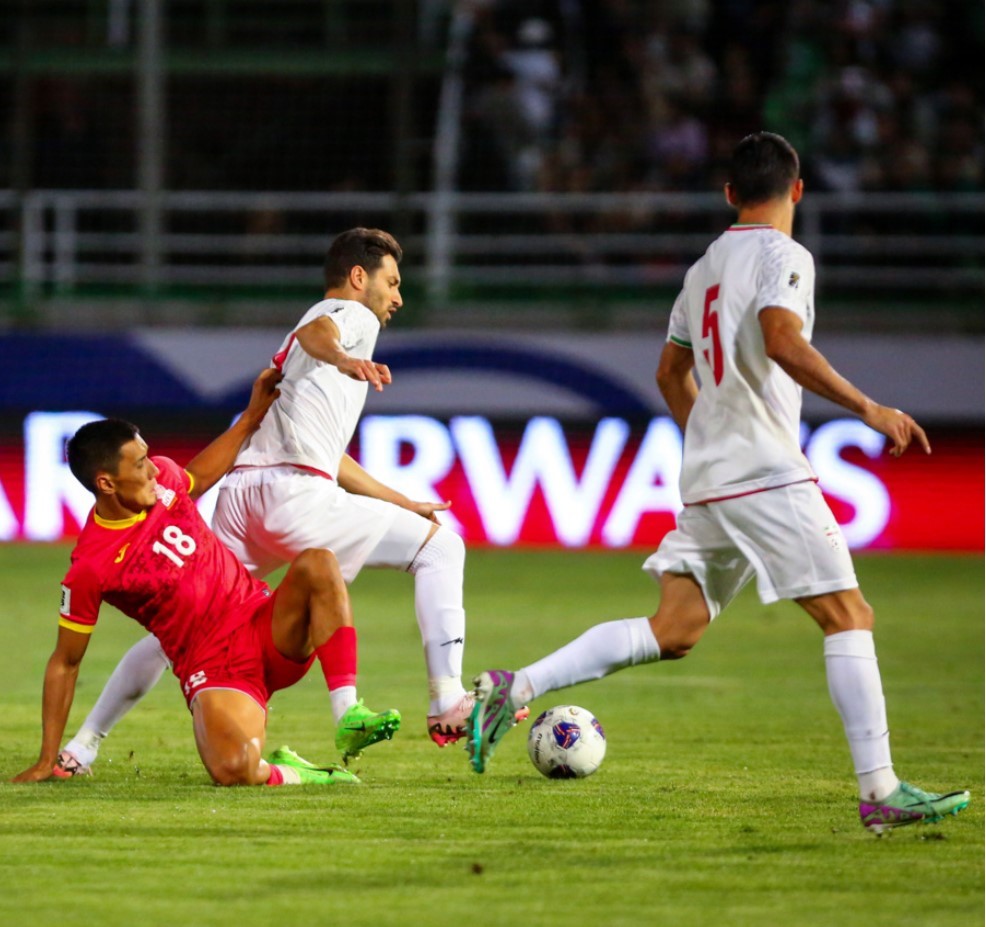
Substitution Decisions
Ghalenoei’s substitutions were mixed. He was quite right in pulling out Gholizadeh, Gaheydi, and Ghoddos as the trio were just not ticking. However, apart from Torabi, Jahanbakhsh and Ezatollahi were even worse.
Feeble Performance and World Cup Qualifiers
The players did not perform as expected. It is quite fortunate that at least eight teams from AFC Asia will qualify for the World Cup. If only 2 to 3 teams were to qualify, Iran would definitely face a huge problem based on such a feeble performance.
PLAYERS RATINGS:
Alireza BEIRANVAND: Although had not much to do throughout the match, two brilliant timely saves rescued Iran from an embarrassing result. Guilty of leaving his goal wide open for no reason.[6.5]
Amin HEZBAVI: Despite a solid performance, he was found wanting when outfoxed by Joel who nearly scored, otherwise an acceptable performance. [6.0]
Arya YOUSEFI: Surprisingly had much action and balls on his side. He had difficulties dealing with all the action. He was not assertive in his passing or positions. His decision-making was suspect although he did not have much defending to do. [4.6]
Shojaa KHALILZADEH: Facing an average side without much appetite for attacking, Khalilzadeah had an easy shift, however, he was the target of his head coach for some bad passing [4.9]
Milad MOHAMMADI: an easy day for defensive duties but much was expected from him on the left flank. Simply said, he failed to deliver and was disappointing [4.6]
Ali GHOLIZADEH: Skillful player without a doubt. His dribbling is at times a joy to watch, but the end result was disappointing against an average team. He was guilty of the miss of the match as a perfect pass from Taremi found him meters from an open goal, but he managed to shoot over the bar. It seemed to be easier to score than missing [5.0]
Omid NOORAFKAN: Poor ball distribution, suspect in defending in the middle of the field, slow in tackling, and generally seemed to be out of place in a midfield role rather than half back, His only positive efforts was trying to shoot, mostly inaccurate but one of them yielded a result. Perhaps, the midfield is not his optimal post [5.1]
Saman GHODDOS: Totally out of the game. A very disappointing performance from a player who at one stage was the maestro of the team. He lacked in every department. His performance proves for the umpteen times that regular competition and playing are vital for a player. [4.3]
Sardar AZMOUN: Disappointing day for such a star. There is no doubt in his abilities as a striker and lethal finisher, however, there are many questions about his attitude. His body language seemed to be of a player who was uninterested. Sardar contributed little to the team until he mysteriously fell on the ground late in the match for him to be substituted!. [4.3]
Mehdi TAREMI: Best of the lot. Scored Iran’s goal and his running and dynamism in changing posts, confused the opponent’s defense. Had his own shortfalls but no one can accuse this player of lack of effort [6.8]
Mehdi GHAEDI: a forgettable game for this tiny winger who could not do anything right. No contribution to the team’s offense and could not create any threat from his side after being tightly marked by the Kyrgyz defender [4.0]
SUBSTITUTES:
Mehdi TORABI -> Ali GHOLIZADEH (59): His efforts and runs, briefly, energized the midfield, however, on his own, the contribution was lost. Torabi needs to be utilized as a ball carrier as he was with Queiroz days as that is his best role. [6.0]
Alireza JAHANBAKHSH -> Mehdi GHAEDI (59): On paper, a perfect substitution but in reality, Jahanbakhsh was quite disappointing. Like Ghoddos , he is without a club and lacks practice which was quite obvious in his shaky performance. Many passing errors which brought the wrath of Ghlenoei on the sidelines [4.2]
Saeid EZATOLAHI -> Saman GHODDOS (66): Only recently out of injury and has not played for 3 months, yet Ghalenoei in his wisdom, chose him to play him hoping to revitalize the midfield against the Kyrgyz. When at his best, Ezatollahi is no more than average, with a lack of match practice, he was quite poor. It was a risk that the coach took a risk that could cost him high against better teams in the group [4.0]
Shahriyar MOGHANLOU -> Sardar AZMOUN (80)
Saleh HARDANI -> Arya YOUSEFI (80)

